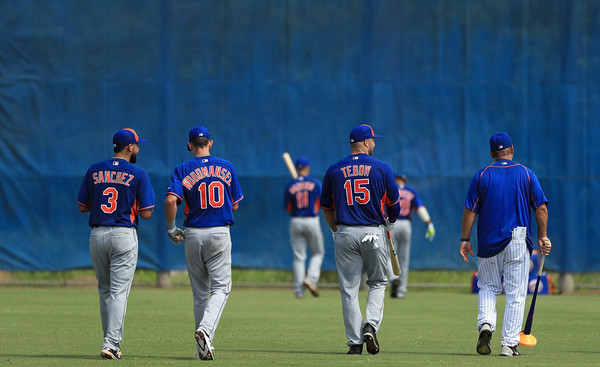
The rash of injuries that the New York Mets’ Major League squad suffered in 2017 has been well documented. From Noah Syndergaard‘s lat tear in May, to Yoenis Cespedes‘ perpetual leg ailments and Michael Conforto‘s gruesome shoulder injury in August, the group of Mets who have found themselves on the disabled list at some point this season nearly outnumber the ones who have managed to avoid it.
This has only been exacerbated by the latest injury updates on David Wright, T.J. Rivera, and Josh Edgin.
To find the root of the injury predicament, many theories have been tossed around. Some blame Mike Barwis and his intense offseason training program, which players such as Syndergaard and Cespedes participated in. Others point to the Major League training staff, comprised of head trainer Ray Ramirez who has held his position for 13 seasons, assistant trainer Brian Chicklo, and strength and conditioning coach Dustin Clarke.
The truth is, while those theories may have some basis, the problem begins in the minor leagues.
According to sources within the organization, Mets minor leaguers have suffered from what has been an ineffective system for diagnosing, treating, and preventing injuries. It is clear that a lack of communication between players, coaches, trainers, and front office personnel have led to prospects missing time that could have been avoided.
Take this example: a player suffers an on-field injury in spring training. He’s deemed ready to go for the start of the season, but only plays in a handful of games before his ailment requires surgery. As a result, over two months of his season have immediately disappeared.
Or this: a player (who does not speak English) complains of discomfort. He’s told to take a cab to a doctor’s appointment, but because of the language barrier, the player misses the ride and is left to sort out matters on his own. Many of the latin ballplayers in the organization do not have cell phones that are equipped for American service, so another problem spot is immediately created.
As previously reported by ESPN, there has not been one person clearly in charge of the organization’s medical operations. Now, however, it is clear that the base of this debacle can be seen down to the individual affiliates. At times, coaches have not even been aware of injuries to their own players.
It’s should come as no surprise that these problems led to a large number of Mets minor leaguers spending time on the disabled list. As the 2017 season winds down, over 30 players are finishing the year incapacitated. This includes more than ten players who either needed, or were recovering from Tommy John surgery, most notably top pitching prospect Thomas Szapucki.
Others needing the operation include breakout farmhands Jordan Humphreys and Max Kuhns, in addition to Joel Huertas, Luis De Los Santos, and third baseman Blake Tiberi. In Tiberi’s case, he played three games in April before arm soreness landed him on the disabled list. 15 days later, he returned, but was only able to play two games before his season was prematurely terminated. Clearly a lost year for the 2016 third-round draft pick.
The team’s top selection two year ago, Desmond Lindsay, finished his season on July 20 due to surgery to reposition the ulnar nerve in his elbow. Three days later, catching prospect Ali Sanchez suffered a fracture to the hamate bone in his left hand. Their Fireflies teammate, Colin Holderman, endured a partial tear in the labrum of his shoulder after four starts, and even though he was able to make three rehab appearances, returned to the disabled list on August 22.
Obviously, some injuries, like Sanchez’s, are unavoidable. But the ones that involve separate trips to the disabled list appear to have gotten worse since their initial diagnosis.
What about newly drafted players, who are being exposed to a professional organization for the first time? When they went down at various points in the season, there was never a consensus as to whether the player was ready to return to action or not, and the frustration on both sides was clearly felt.
It’s tough to say what needs to be done to fix this situation, but evidently a personnel change at some level is needed. The organization can’t continue to operate with the belief that the majority of injuries will get better over time, because they clearly haven’t. An environment where minor league players, coaches, trainers, and the front office are on the same page is one that will need to be created if the Mets hope to stay healthy at the Major League level.













